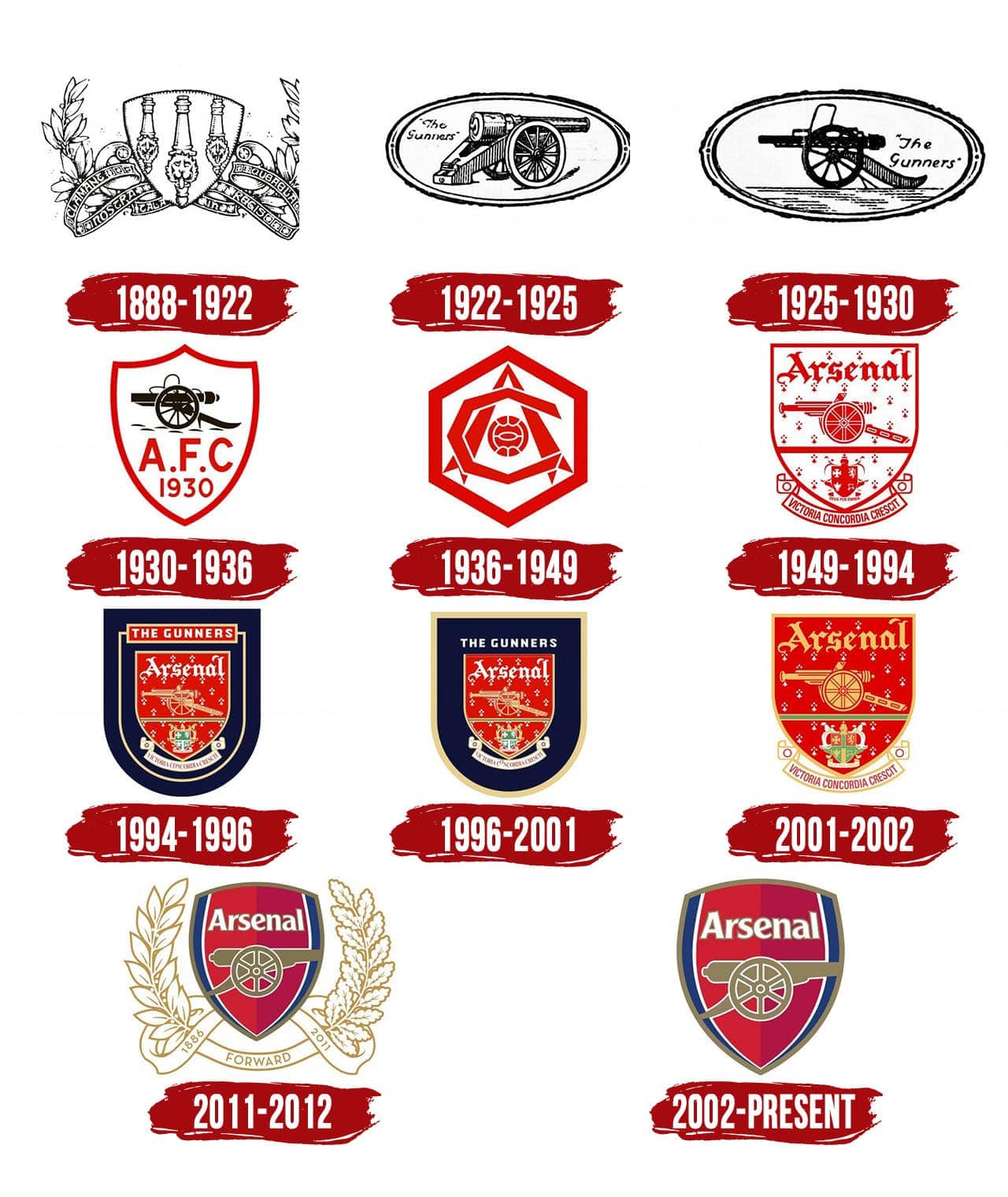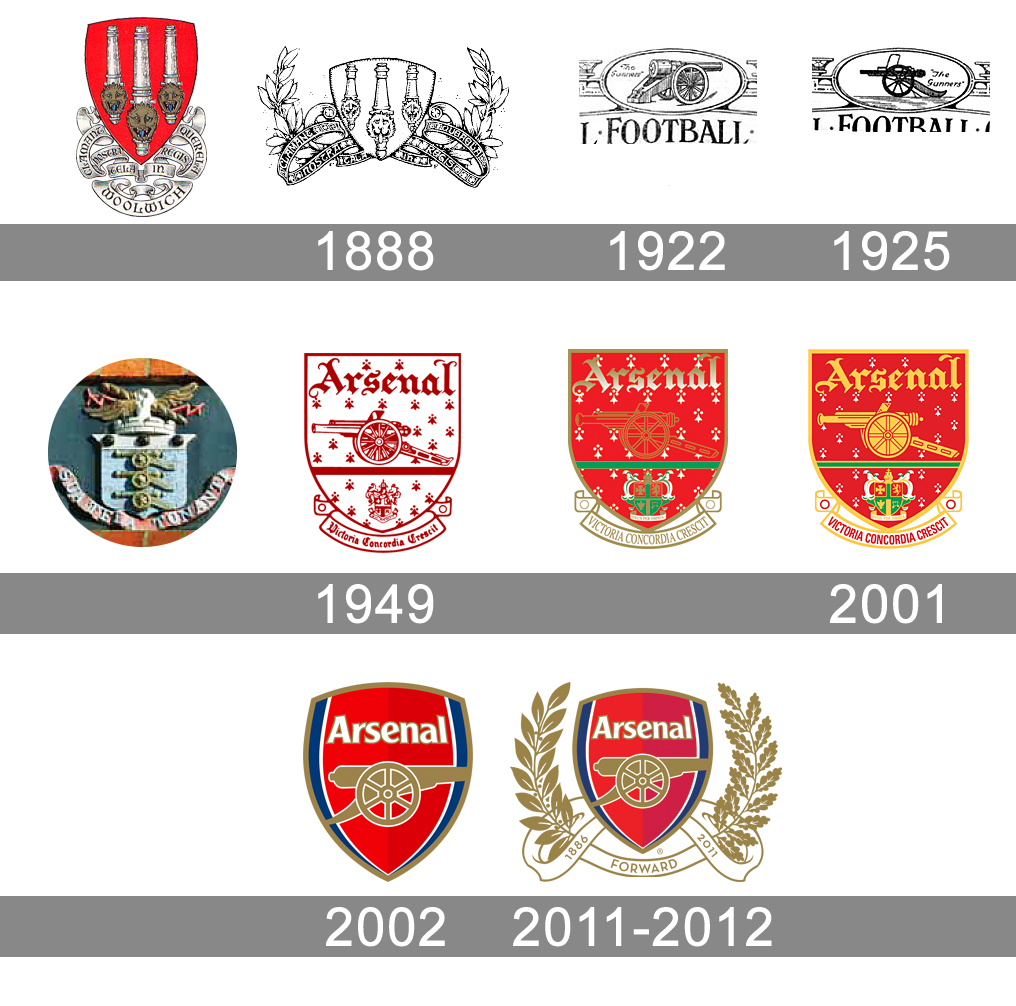
The Enduring Legacy: A Comprehensive History of Arsenal Football Club
From humble beginnings in a South London armaments factory to becoming one of the most celebrated and globally recognised football institutions, Arsenal Football Club’s journey is a tapestry woven with innovation, triumphs, heartbreaks, and an unwavering commitment to a distinctive style of play. With over 130 years of history, the Gunners have etched their name into the annals of English football, constantly evolving while staying true to a core identity.
The Genesis: Dial Square to Woolwich Arsenal (1886-1913)
The story of Arsenal begins in October 1886, when a group of workers at the Royal Arsenal armament factory in Woolwich, South London, decided to form a football team. Initially named Dial Square, they played their first match in December of that year, defeating Eastern Wanderers 6-0. Soon after, the club adopted the name Royal Arsenal, reflecting their industrial roots. They quickly gained recognition, turning professional in 1891 and becoming the first club from the South of England to join The Football League in 1893, entering the Second Division.
Upon joining the league, the club rebranded again, becoming Woolwich Arsenal. They initially played at the Manor Ground in Plumstead, but financial struggles plagued their early professional years. Despite promotion to the First Division in 1904, the club struggled to compete with the wealthier northern clubs and faced mounting debts. Relegation in 1913 seemed to signal a bleak future.
It was at this critical juncture that Henry Norris, a visionary but controversial businessman and chairman, intervened. Believing that the club needed a new location with a larger catchment area and better transport links, he orchestrated a controversial move north of the River Thames to Highbury, Islington, in North London. This decision, fiercely opposed by local residents and even some fans, laid the foundation for the club’s future success and ignited the intense North London Derby rivalry with Tottenham Hotspur. At this point, the "Woolwich" prefix was dropped, and the club simply became known as Arsenal.
The Chapman Era: A Revolution Unfolds (1925-1934)
The true transformation of Arsenal into a footballing powerhouse began with the arrival of Herbert Chapman as manager in 1925. Chapman was a footballing visionary, a man ahead of his time who recognised the need for professionalism, tactical innovation, and a strong club identity. He famously introduced the WM formation, revolutionising defensive and offensive play, and was instrumental in the introduction of numbered shirts. He also added white sleeves to the red shirts, creating an iconic look that persists to this day, and successfully lobbied for the renaming of Gillespie Road tube station to Arsenal, making it the only London Underground station named after a football club.
Chapman understood the importance of attracting top talent. He signed legendary players such as Alex James, a mercurial Scottish inside-forward, and Cliff Bastin, a prolific winger. Under his guidance, Arsenal secured their first major trophy, the FA Cup, in 1930, defeating Huddersfield Town. This was swiftly followed by their first First Division title in 1931. Chapman continued to build a formidable team, setting the stage for an era of dominance. Tragically, Chapman’s life was cut short by pneumonia in January 1934, but his legacy had already fundamentally reshaped Arsenal and English football.
The Golden Thirties and Post-War Resurgence (1934-1953)
Despite Chapman’s untimely death, the foundations he laid ensured Arsenal’s continued success. Under his successors, Joe Shaw and George Allison, the club continued their remarkable run, winning three more league titles in 1933, 1934, and 1935, completing a hat-trick of championships. They also lifted the FA Cup again in 1936. The 1930s truly belonged to Arsenal, with Highbury becoming a fortress and the club setting new standards for professionalism and tactical sophistication.
The outbreak of World War II interrupted football, and Highbury was even used as an Air Raid Precautions station, with parts of the stadium bombed. However, Arsenal quickly rebuilt after the war. Under manager Tom Whittaker, who had been Chapman’s assistant, the club secured their first post-war league title in 1948 and the FA Cup in 1950. This period cemented Arsenal’s reputation as one of England’s elite clubs, a testament to the enduring structures and philosophy established by Chapman.
The Wilderness Years and the First Double (1953-1971)
The mid-1950s and 1960s represented a relatively fallow period for Arsenal. After their 1953 league title, the club experienced a significant trophy drought, struggling to keep pace with emerging forces in English football. Despite reaching an FA Cup final in 1952, they didn’t win another major trophy for 17 years. This era saw a string of managerial changes and a struggle for consistent form, leading to a reputation for being somewhat "boring" compared to their illustrious past.
However, a new dawn arrived with the appointment of Bertie Mee as manager in 1966. Mee, a former club physiotherapist, embarked on a rebuilding phase, focusing on youth development. This strategy began to bear fruit with the club’s first European trophy, the Inter-Cities Fairs Cup, in 1970.
The true pinnacle of Mee’s tenure, and a defining moment in Arsenal’s history, came in the 1970-71 season. Against all odds, the Gunners achieved the coveted "Double," winning both the First Division title and the FA Cup. The league was secured on the final day of the season with a dramatic 1-0 victory over Tottenham Hotspur at White Hart Lane, and the FA Cup followed five days later with a thrilling 2-1 extra-time win over Liverpool at Wembley, sealed by Charlie George’s iconic winning goal. This achievement reignited the passion of the fanbase and restored Arsenal to the very top of English football.
The George Graham Era: "One-Nil to the Arsenal" (1986-1995)
Following the Double, Arsenal experienced another period of inconsistency in the late 1970s and early 1980s, marked by several FA Cup final appearances but only one triumph (1979). The appointment of former player George Graham as manager in 1986 ushered in a new era of defensive solidity and pragmatic success.
Graham built his teams around a formidable back four – Lee Dixon, Tony Adams, Steve Bould, and Nigel Winterburn – renowned for their disciplined offside trap and robust defending. This defensive strength, combined with moments of attacking brilliance, became the hallmark of his tenure, famously encapsulated by the chant "One-nil to the Arsenal."
Graham’s Arsenal won the League Cup in 1987, but their most iconic triumph came in the 1988-89 season. In a dramatic climax, Arsenal faced Liverpool at Anfield on the final day of the season, needing to win by two clear goals to clinch the First Division title. Michael Thomas’s last-gasp goal in injury time secured a sensational 2-0 victory, snatching the title from Liverpool in one of the most thrilling finishes in English football history.
Graham’s side added another league title in 1991, losing only one game all season. They also secured a unique FA Cup and League Cup double in 1993 and capped it off with the European Cup Winners’ Cup in 1994, defeating Parma in the final. Graham’s reign ended controversially in 1995, but his tactical acumen and trophy haul had once again cemented Arsenal’s place among the elite.
The Arsène Wenger Revolution: The Invincibles and Beautiful Football (1996-2018)
The appointment of an unknown French manager named Arsène Wenger in September 1996 initially raised eyebrows. "Arsène Who?" was a common refrain. However, Wenger quickly proved to be another revolutionary figure in Arsenal’s history, transforming not only the club but also influencing English football as a whole.
Wenger introduced radical changes to training, diet, and scouting, bringing a scientific approach to football. He fostered a fluid, attacking style of play, often described as "beautiful football," built around technical brilliance and intelligent movement. He brought in a host of world-class foreign players who would become legends, including Dennis Bergkamp, Patrick Vieira, Thierry Henry, Robert Pires, and Freddie Ljungberg, blending them with existing English talents like Tony Adams and Martin Keown.
Wenger’s first "Double" came in 1998, followed by another league title in 2002. However, his most remarkable achievement came in the 2003-04 season, when Arsenal went an entire Premier League season unbeaten, earning them the moniker "The Invincibles." This remains a singular achievement in the modern era of English football and is widely regarded as one of the greatest club teams of all time.
In 2006, Arsenal reached the UEFA Champions League final for the first time in their history, losing narrowly to Barcelona. That same year, the club made the momentous move from their beloved Highbury stadium, their home for 93 years, to the state-of-the-art Emirates Stadium, a necessary step for financial growth and global competitiveness.
The move to the Emirates, however, coincided with a period of financial constraint as the club prioritised debt repayment. This led to a nine-year trophy drought, a challenging period for fans accustomed to success. Despite this, Wenger consistently guided Arsenal to Champions League qualification, a testament to his managerial prowess. The drought finally ended with FA Cup triumphs in 2014, 2015, and 2017, making Wenger the most successful manager in FA Cup history with seven wins.
After 22 years, 3 Premier League titles, 7 FA Cups, and a profound impact on the club’s identity and global standing, Arsène Wenger departed Arsenal in May 2018. His legacy is one of elegance, innovation, and an unwavering commitment to attacking football.
The Modern Era: Rebuilding and Renewal (2018-Present)
The post-Wenger era has been one of transition and rebuilding. Unai Emery took the helm but lasted only 18 months. In December 2019, former Arsenal captain Mikel Arteta was appointed manager. Arteta, a protégé of Pep Guardiola, has embarked on a mission to restore Arsenal’s competitiveness and identity.
Under Arteta, Arsenal secured the FA Cup in 2020, providing a much-needed lift. The club has since focused on developing young talent, with players like Bukayo Saka, Emile Smith Rowe, and Gabriel Martinelli becoming integral to the squad. After several seasons outside the Champions League, Arteta guided Arsenal back to the elite competition, and the club has mounted strong Premier League title challenges in consecutive seasons (2022-23 and 2023-24), showcasing a renewed belief and tactical maturity.
Conclusion: Always Forward
Arsenal Football Club’s history is a rich tapestry of groundbreaking achievements, iconic figures, and moments that have shaped English football. From the pioneering spirit of Herbert Chapman to the revolutionary vision of Arsène Wenger, the club has consistently striven for excellence and innovation. The move from Highbury to the Emirates symbolised a forward-looking ambition, and while the journey has had its ups and downs, the club’s commitment to attractive, attacking football and its deep connection with its global fanbase remain constant. As the club’s motto "Victoria Concordia Crescit" (Victory Through Harmony) suggests, Arsenal’s enduring legacy is built not just on trophies, but on unity, passion, and an unyielding desire to move "Always Forward."



